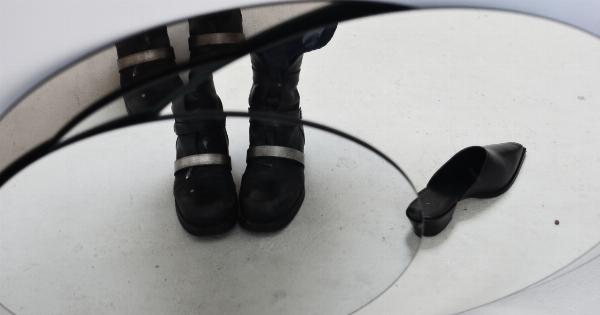Morton’s neuroma is a painful condition that affects the foot, specifically the area between the third and fourth toes. It is also referred to as Morton’s metatarsalgia or interdigital neuroma.
This condition occurs when the tissue surrounding a nerve in the foot thickens, causing pain, numbness, or a burning sensation in the affected area. Although Morton’s neuroma can affect anyone, it is more common in women who wear high heels regularly.
The Link Between High Heels and Morton’s Neuroma
High heels, especially those with pointed toes, can contribute to the development of Morton’s neuroma. The continuous pressure and friction exerted on the toes and forefoot when wearing high heels can compress the nerves in that area.
Additionally, high heels force the foot into an unnatural position, putting extra strain on the metatarsals.
How High Heels Contribute to Morton’s Neuroma
When you wear high heels, your foot is forced into an angled position, with most of the body’s weight on the ball of the foot. This puts excessive pressure on the metatarsal heads, the areas where the toes meet the rest of the foot.
Over time, this pressure can lead to the development of Morton’s neuroma.
The Effects of High Heels on the Foot
Wearing high heels not only increases the risk of developing Morton’s neuroma but also has other detrimental effects on the foot. These include:.
- Foot Alignment: High heels disrupt the natural alignment of the foot and can lead to imbalances that affect the entire body.
- Toe Deformities: Regularly wearing high heels can cause or exacerbate common toe deformities, such as bunions and hammertoes.
- Increased Risk of Falls and Injuries: Wearing high heels can make you more prone to falls and other foot and ankle injuries due to instability and reduced balance.
- Arch Strain: High heels put strain on the arch of the foot, leading to discomfort and potential long-term damage.
Preventing Morton’s Neuroma
While avoiding high heels altogether may be the best way to prevent Morton’s neuroma, it may not be practical for everyone. Here are some tips to minimize the risk:.
1. Choose Sensible Heel Heights
Opt for lower heels (around 1-2 inches) that provide better weight distribution and reduce pressure on the forefoot. Wedges or platform heels can also be more comfortable and stable alternatives to stilettos.
2. Choose Wide-Toe Box Shoes
Shoes with a wide toe box allow the toes to spread naturally, relieving pressure on the nerves. Avoid narrow or pointed-toe shoes that squeeze the toes together.
3. Wear Shoe Inserts or Orthotics
Custom shoe inserts or orthotics can offer support, cushioning, and proper foot alignment, reducing the risk of developing Morton’s neuroma.
4. Alternate Shoe Styles
Avoid wearing high heels every day. Alternate with supportive and comfortable shoes to give your feet a break from the pressure and strain caused by high heels.
5. Stretch and Strengthen the Feet
Regularly stretching and strengthening the muscles and ligaments in the feet can help improve their resilience and reduce the risk of developing foot conditions like Morton’s neuroma.
Treatments for Morton’s Neuroma
If you are already experiencing symptoms of Morton’s neuroma, there are several treatment options available:.
1. Footwear Modifications
Switching to footwear with a wider toe box, lower heel height, or additional cushioning can alleviate symptoms and prevent further aggravation.
2. Orthotic Devices
Custom orthotic devices, prescribed by a podiatrist, can provide support and relief by redistributing pressure away from the affected area.
3. Steroid Injections
Corticosteroid injections can help reduce pain and inflammation associated with Morton’s neuroma.
4. Physical Therapy
Specific exercises and physical therapy techniques can help improve foot strength, flexibility, and overall biomechanics, alleviating symptoms and preventing reoccurrence.
5. Surgery
If conservative measures fail to provide relief, surgical intervention may be necessary. The procedure typically involves removing the affected nerve or releasing the structures compressing the nerve.
Conclusion
Morton’s neuroma is a painful condition that can significantly impact one’s quality of life.
The consistent use of high heels, especially those with narrow toe boxes and higher heels, is a known risk factor for developing Morton’s neuroma. It is essential to choose sensible footwear, take regular breaks from high heels, and prioritize foot health to reduce the risk of this condition.
Additionally, seeking early treatment and following preventative measures can help manage symptoms and prevent further progression of Morton’s neuroma.


























